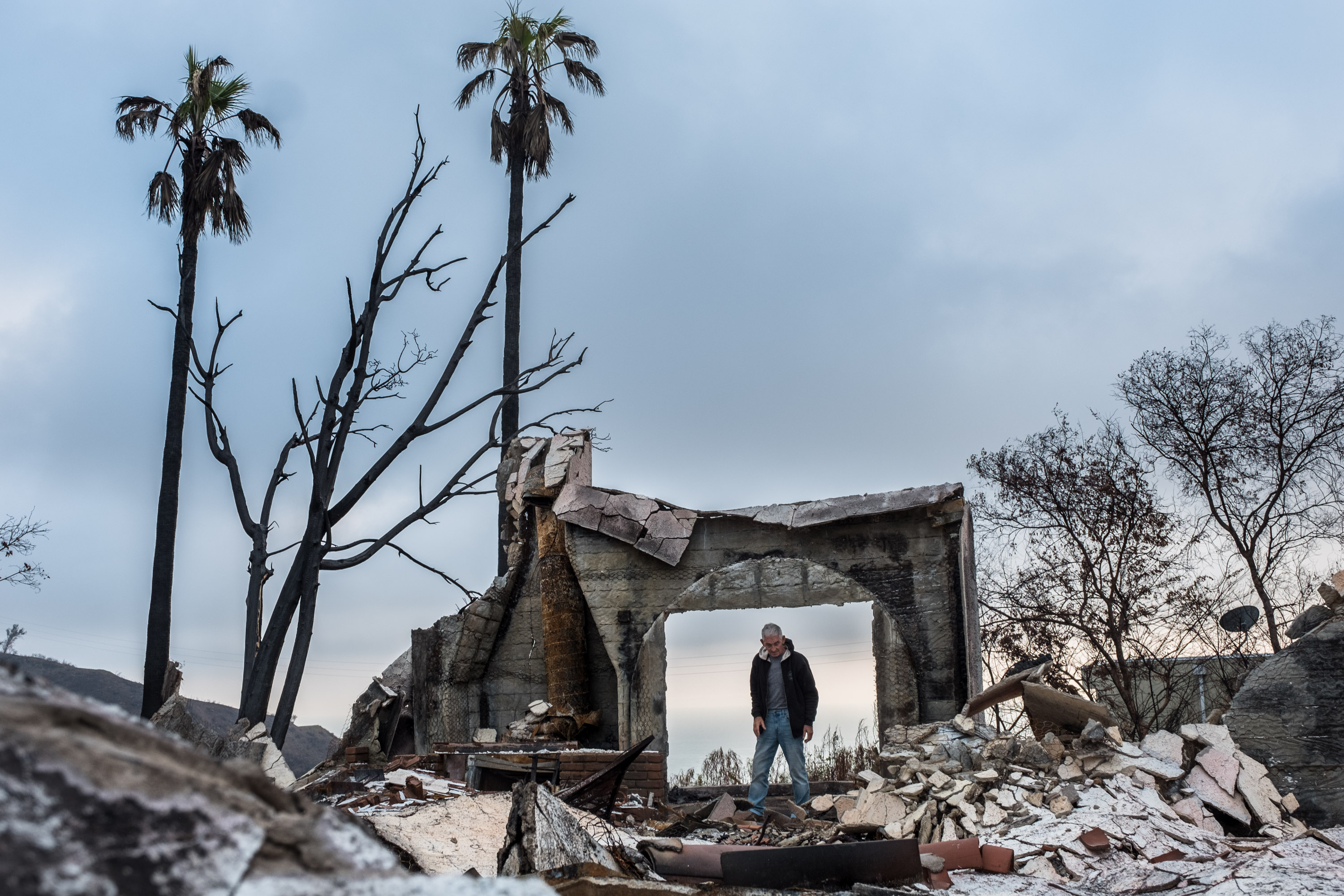Last Updated on 09/18/2019 by Bob Dortch
In her eye-opening, long-term project, Los Angeles-based Mette Lampcov calls our attention to the reality that climate change is a multi-faceted problem that we can no longer afford to ignore.
With wildfires now burning hotter and longer, we can no longer deny or ignore the reality of climate change and its impending aftermath. This is the crux of Los Angeles-based Mette Lampcov’s documentary work in California, one of the hotspots of deadly fires in the United States. Titled Water to Dust, it chronicles how climate change is a two-pronged problem in the state, and aims to open our eyes to the dramatic impact that threatens to spread across the globe.
Editor’s Note: Visual Momentum refers to the flow of storytelling and its effect on the viewer’s thinking process. This series highlights creators who are successfully using their tools and minds to create an impact on the world through imagery with the intent of inciting action. With the support of Fujifilm, we share their stories. Be sure to also check out the interview on This Week in Photo.
Mette found out early on that, when documenting climate change in California, it inevitably means covering two things: droughts and wildfires. She realized this after following leads for a story about the extreme drought in her area and the contaminated water in San Joaquin Valley. What was originally meant to be a feature about water turned into something bigger, as severe drought expands into other widespread disasters like food security, forest health, and wildfires. Water to Dust became Mette’s ongoing response to a far-reaching crisis that has been greatly affecting the landscapes and the communities surrounding them.
“I never knew that this project would become so big and cover so many different aspects as it has when I set out working on it,” Mette recalled. “California is seeing and feeling the impact of rising temperatures caused by man-made climate change, as business as usual output of CO2 is affecting people’s lives and their surrounding landscapes.”
.
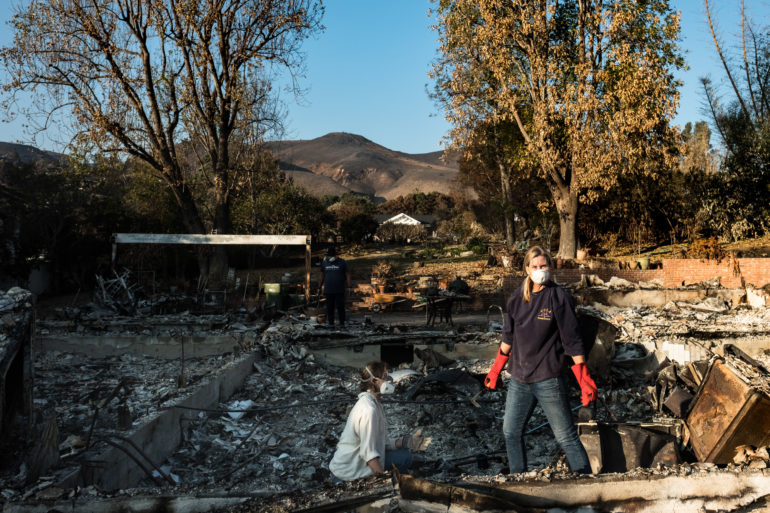
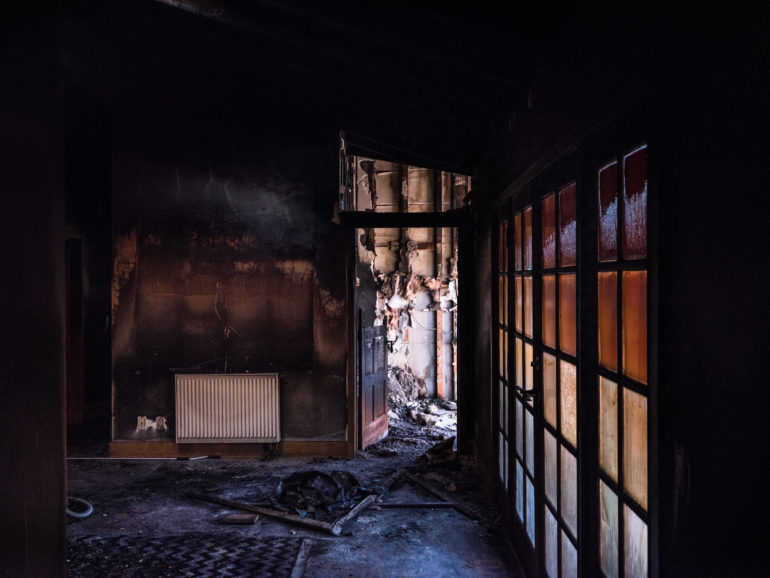
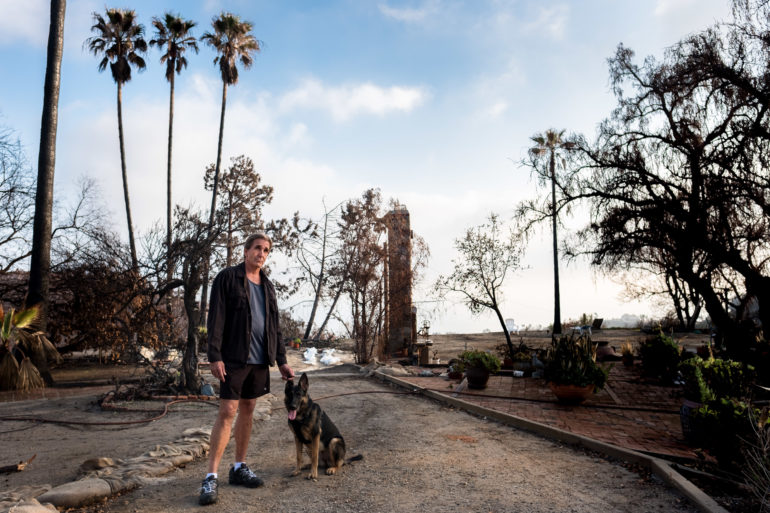
Following the Water
Scientists assert that if you’re looking for life, you have to follow the water. It was also water that led Mette to her big story. Around the time she was accepted into a three-year mentorship program at Anderson Ranch, there was also an extreme drought gripping the landscape where she lived. While she was looking for the right project for the program, she received a tip about communities in San Joaquin Valley. This is where people were being charged huge water bills for contaminated water.
“After going out to document what was going on in these small, unincorporated towns mostly inhabited by farmworkers, I originally thought I was going to work on a project about water,” states Mette. “But very quickly I realized I could not separate climate change and water in California. They are so closely linked.”
Following the water, Mette discovered that it’s a big chunk of the story. The snow that falls during the cool and mostly wetter winter months in the Sierra Nevada mountains are responsible for up to 80% of California’s water. When these mountains are compromised by climate change it ripples into a slew of problems that drastically alter the landscape. “The mountains work as the state’s natural water storage system, but that is changing with climate change. Essentially, this domino effect happens as the water supply changes and temperatures rise, affecting drought, food security, forest health, wildfires, and so it goes on.”
“Climate change is the theme. But what I see as the connectors are water, rising temperatures, and the heat. The Sierra Nevada is the mother of the project because this is where our water source is from. What happens as you start to remove water from a state that is in large part a desert? It’s why we have bigger wildfires. It’s why forests are dying. It’s why people who live with water contamination and other public health issues will just get exasperated.”
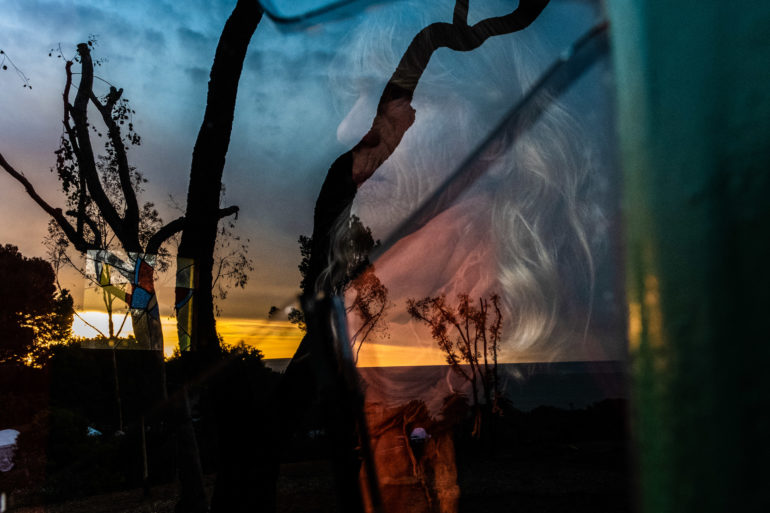
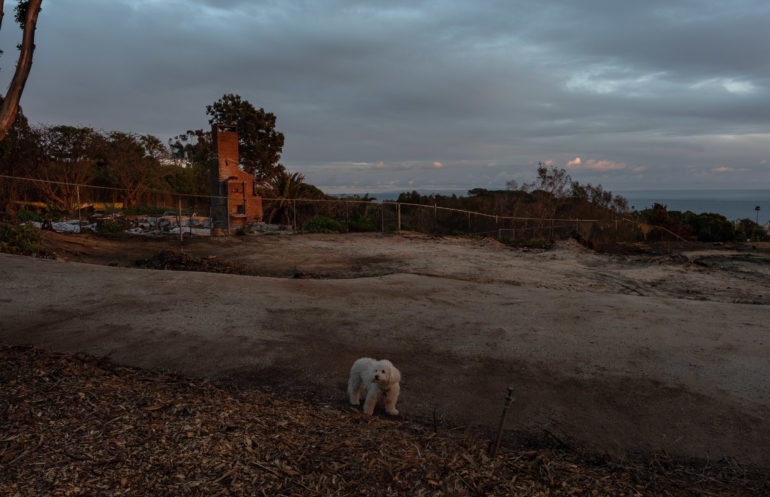
Burning Issues
In 2018, Mette spent two days covering the Woolsey Fire for the Wall Street Journal. The mammoth wildfire that devastated Los Angeles and Ventura counties in California razed over 96,949 acres (39,000 hectares) of land and 1,643 structures. Three people died, and more than 295,000 people needed to be evacuated. Mette saw great attention to the dramatic imagery during the fire, but once it was put out, the story stopped. Now, she wants to show what is left since the ashes have settled. And she is aware that the story isn’t over yet.
“The fires last 3-4 days, but the aftermath of fires in years. What happens then? What are people’s lives like?” she mused. “As past Governor Brown said, ‘this is the new abnormal’ as fires grow stronger and hotter, and more and more people are affected. This ties in directly to an overall narrative on how the climate emergency affects Californians directly.” Mette continued to state that, as climate-related events like the fires become more common, it’s expected to have dramatic effects on millions of more people, not only in California but all over the world.
Despite the amount of alarming evidence, the generally lukewarm public response to climate change remains one of the burning issues Mette addresses in her project. She observed that most people have a tough time recognizing climate change or don’t even want to deal with it at all. People tend to relate most to things that affect them personally: that’s where the problem lies. “I think many people glaze over when I talk about it. I also think they feel helpless. We really have not been doing a good job changing our behavior even if we have known about this since the 1970s.” Still, she thinks there should be more stories about the different and wide range of effects brought about by climate change. There needs to be more stories that are nuanced enough to give a broader and more in-depth understanding of what is happening today, not just what might happen.
“If we only talk of climate change as something happening ‘over there, to them’ then that gives us the idea of ‘well, we’re safe for now so let’s not do anything.’ I do think there has been a stereotype of climate change images’ that are not very helpful.”
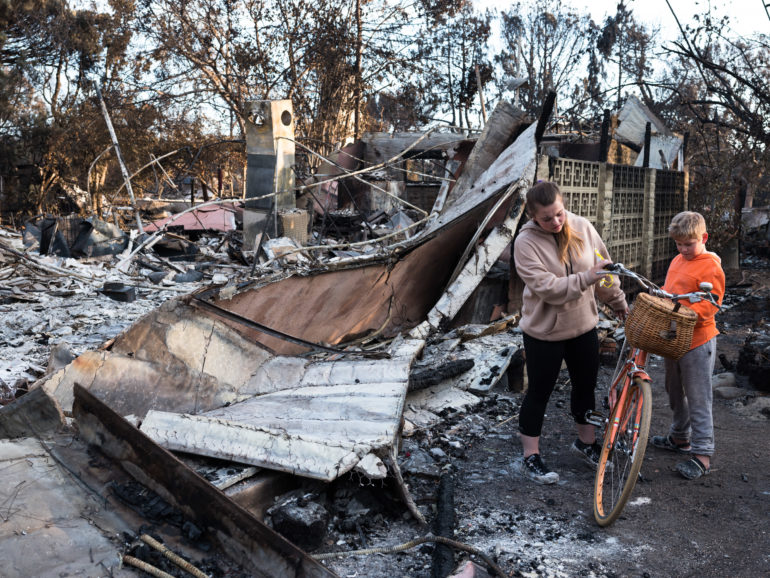
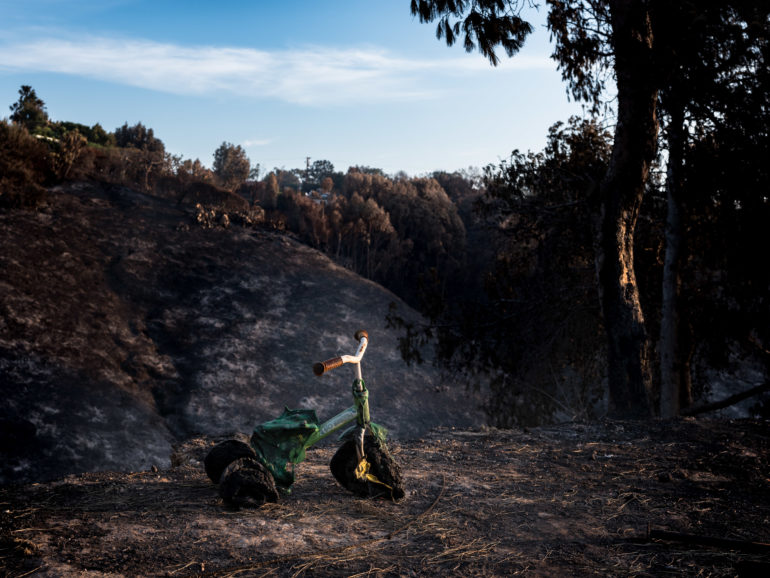
Preparing for the Project
Every documentary project begins with ample research, especially with one as long-term as Water to Dust. Mette dedicates plenty of time to research before heading to any assignment or following a lead. “I want to arrive well informed about what’s going on in each area I will be working and how it’s affecting people. I reach out to experts and scientists, but at the same time, I like to let the story take me.”
Safety is also a big part of Mette’s preparations. While covering the mandatory evacuation as part of her two-day assignment for the Wall Street Journal, the location was still an active fire zone. A documentary filmmaker-friend arrived in a 4-wheel drive as her fixer for a day. He kept his eyes on the road for any dangers and obstacles to ensure that she could get in and out of the car and shoot the scenes safely. “He understood what I needed and made sure I could concentrate on the photography.” After the fires settled, she also made sure she had hazmat suits, masks, and shoes that don’t melt to protect herself while she went out to document the aftermath. “The debris from the fire zone are highly contaminated, and the tree roots and the earth can be smoldering hot for a long time after.”
As for her gear of choice, she prefers to use the Fujifilm X-T2 and the GFX 50s for the project. “My X-T2 is the first camera I reach for in new situations; it’s quiet, it doesn’t overwhelm people. I like that I can see exactly what I will see on my computer later. The GFX 50s I only got recently, so I have only used it for the fire aftermath part of Water to Dust. The color and range are just amazing. I am excited to start to use it more.”
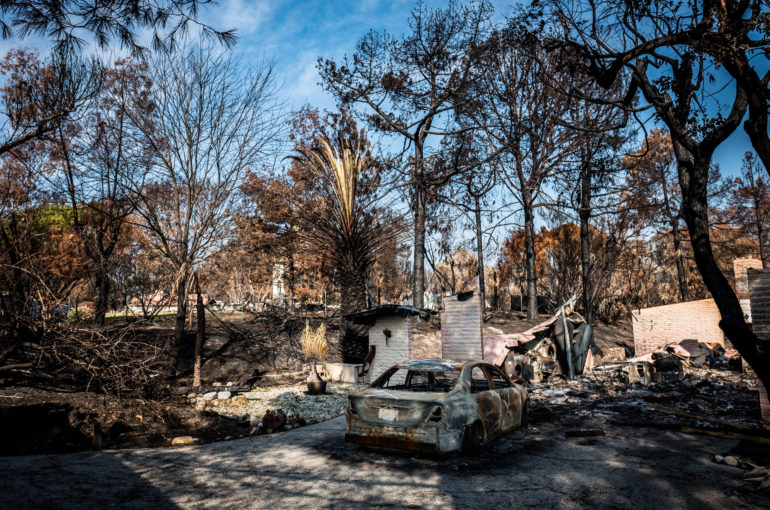
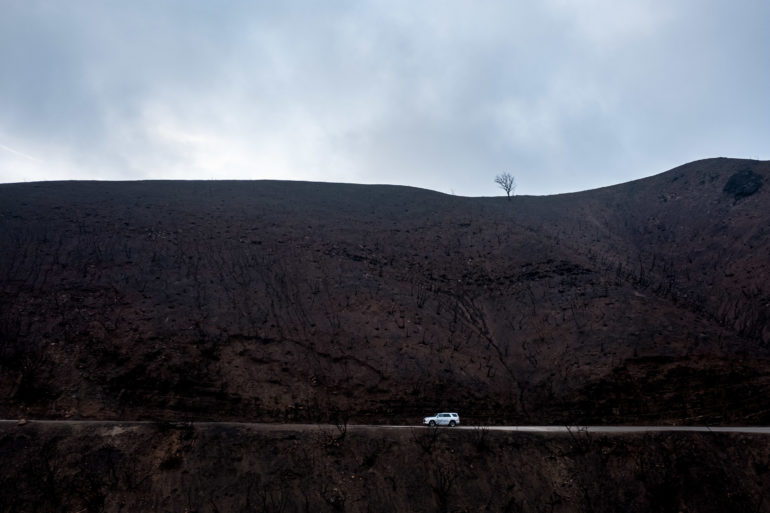
Lessons from Water to Dust
Each section of the project has left Mette with emotions and realizations about climate change, as well as the people who have been on the front lines of its effects. Meeting those who live with contaminated water and have very little political or economic voice was particularly profound. Seeing millions of dead trees blew her mind and left her somewhat hopeless about our future. Still, she believes that the long-term trauma and lifetime impact on people’s lives is not well understood, and thus deserves more attention.
“While covering the Woolsey fire, I hugged and cried with people. This was climate change on the front steps of one of California’s largest and most urban cities. One man who teaches at a well-known college told me that he always thought of climate change affecting people ‘over there’ and pointed into the unknown distance. He never thought he had to help his family go through the rubble and debris of their home, hoping to find some belongings. They are now climate change refugees.“
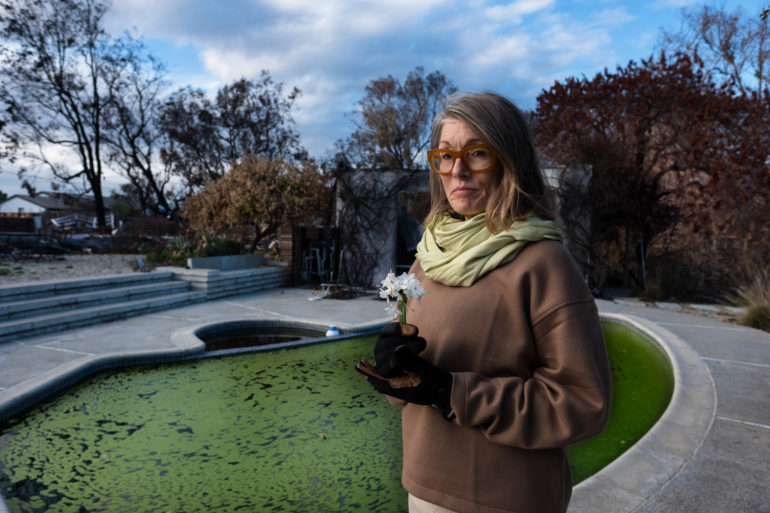
.
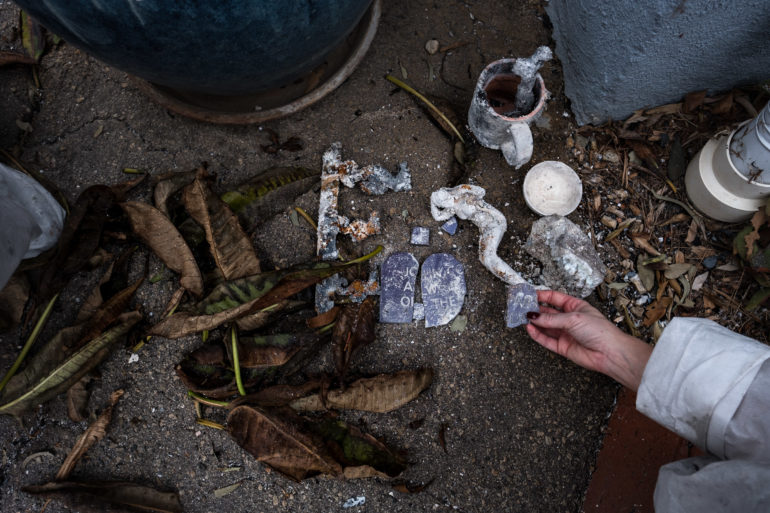
Water to Dust also enabled Mette to reinforce the strength of documentary photography in her work, evaluate her storytelling approach, and think about what her photography legacy should be. “Documentary photography helps people connect and share real stories about real people and stand witness to reality and facts,” she noted. “In the past, I would not have thought much about my legacy; my ego would probably not have allowed that. But now I do. I really want us to see this and make changes, which will only be possible if we fully understand that change comes via the ballot box and put pressure on our governments.”
Recent years also saw her focusing more on her goals of “being very truthful and very present out in the field,” making sure she does all her research. “I would never work for 4 years on a project about climate change unless I was slightly obsessed and loved it. There is not a day I don’t look at the research papers, reports, or read articles about the climate crisis and think about what I should be out working on. I think climate change and I choose each other.”
Beyond California’s Wildfires
With climate change being a global concern, Mette can’t help but see parallels in the California and Amazon wildfires. The connection, she says, lies in the complete disregard for our environment by both the Brazilian and American governments. While not an expert on Brazilian rainforests, Mette understands that farmers or loggers are setting fires to clear lands for cattle production and soybeans. Climate change will exacerbate these fires.
In California, the increase in the aggression of wildfires is directly connected to rising temperatures and climate change. Studies show a direct correlation between the rising temperatures and the size of fires. In turn, fires and dead forests release carbon, further fueling climate change. The fires that burned in California in 2018 released 68 million tons of carbon dioxide into the atmosphere. The Camp and Woolsey fire alone produced 5.5 million tons of carbon dioxide, according to a preliminary analysis by the USGS.
“Forest fires are burning all over the world. While much attention has been brought to the Amazon, there were also fires in the Arctic of Greenland, Canada, Alaska, and Indonesia last year,” Mette reminds us. “The world’s forests are burning, and it’s a combination of climate change and greed.”
To address the global climate change situation, Mette believes we desperately need brave politicians who will go beyond the status quo. This is where public art comes in to present relevant information to a wider audience. She hopes that when she completes Water to Dust in the next year or two, she can transform it into public art to bring climate change to the forefront of the conversation.
“I want it more than anything to be public art around California, especially in the areas where I photographed, to engage the local community. I want to post large prints with captions and connect all the images around the state to each other via smartphones, so that people can learn about the different issues that people or the land around them are facing. The one thing that has been interesting about this project is the disconnect from different regions and the blame that is put on other people.”
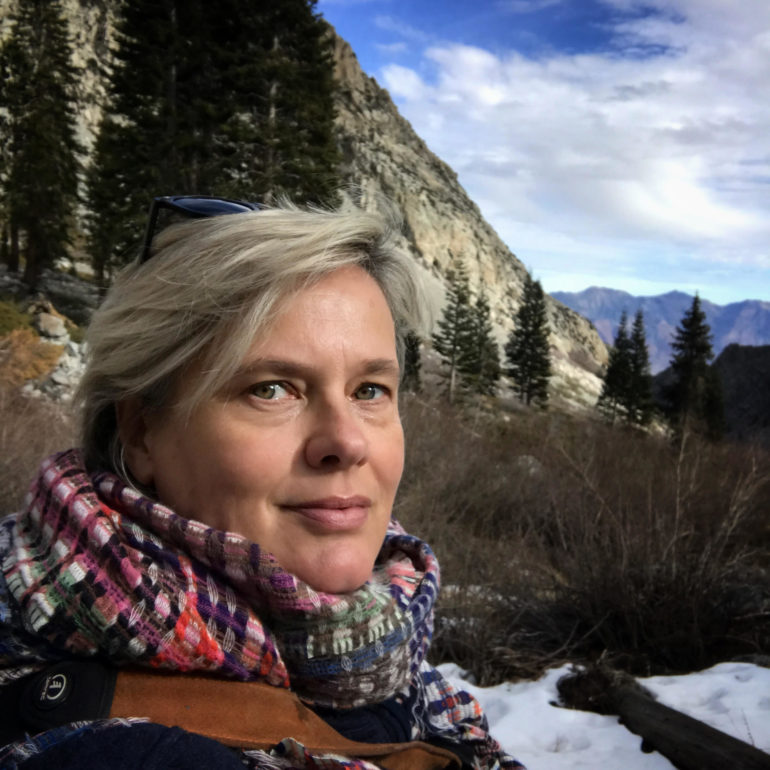
About Mette Lampcov
Mette Lampcov is a freelance documentary photographer from Denmark and is currently based in the greater Los Angeles area. She studied fine art in London, England and studied photography and journalism at UCLA after moving to the United States 10 years ago. Her personal work includes projects about violence against women around the world and undocumented migrant workers in California.
She is currently concentrating on Water to Dust, a long-term project in California which explores how climate change and water affect different socioeconomic groups and the landscape surrounding them. This project is part of a three-year mentorship with photojournalist, filmmaker, and educator Ed Kashi, and New York Times Lens Blog Co-Editor and Senior Staff Photographer James Estrin. Her work has appeared in the New York Times, Buzzfeed, and the Sydney Morning Herald. She was also one of the 2018 Adobe Rising Stars of Photography.
As a documentary photographer, Mette finds inspiration in other photographers and creative people, as well as with the people she meets and the landscape she sees when she’s out in the field. Through science and research-backed visual stories, she seeks to uncover awareness and understanding in places where people may not usually look.
Follow Mette Lampcov on Instagram (@mettelampcov) to stay updated with her work.
Editor’s Note: This is a sponsored blog post from Fujifilm
About FUJIFILM North America Corporation (Fujifilm)
FUJIFILM North America Corporation (Fujifilm) is empowering photographers and filmmakers everywhere to build their legacies through sharing their stories. Grounded in its 85-year history of manufacturing photographic and cinema film, pioneering technologies in lenses and coatings, and driving innovation in developing mirrorless digital camera technologies, Fujifilm continues to be at the center of every storyteller’s creative vision.
Pushing boundaries in digital photography and filmmaking innovations, Fujifilm’s X Series and GFX family of mirrorless digital cameras and FUJINON lenses yield exceptional image quality for creators of all levels. Offering image clarity, advanced color reproduction technologies and a wide range of film simulations, Fujifilm’s family of mirrorless digital cameras delivers on fulfilling their intrinsic mission of capturing and preserving moments for generations to come.
With a Fujifilm digital camera at your fingertips, you can seize the moment, share your story and build your legacy. Learn more on our website.
Like us on follow us on subscribe on and join the conversation on Facebook, like us on Instagram, subscribe on YouTube and join the conversation on Twitter.
What momentum do you want to start?
It’s amazing how a single thought, action or personal passion can ignite something that can make a difference. As a fellow photographer, we invite you to share what drives you… what do you want to get started, build momentum to? It starts with you. Share your visual social stories with #visualmomentum.


